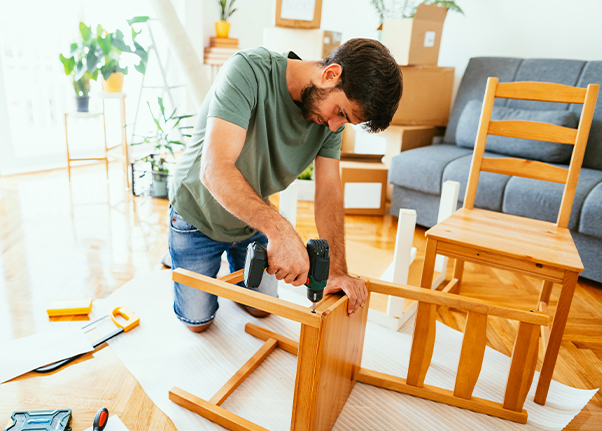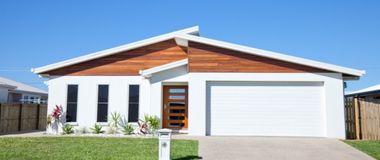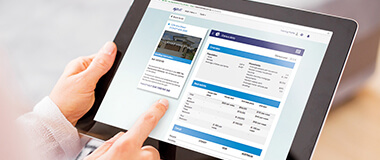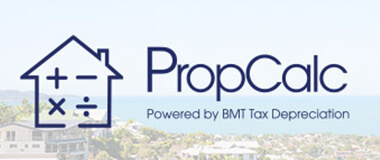Can you claim furniture for a rental property? A Q&A guide for property investors

First published 28 May 2025
Furnishing a rental property can enhance tenant appeal, increase occupancy and increase rents, but what about the tax side? At BMT, we often hear the question: can you claim furniture depreciation for a rental property?
This Q&A article breaks down everything residential property investors need to know about rental property furniture depreciation, including scenarios involving new and second-hand furniture, tax deductions and scrapping rules.
- Can you claim furniture for a rental property?
- Can you claim furniture for a short-term rental property?
- Can you claim the full cost of furniture in the year of purchase?
- What happens if new furniture is damaged by a tenant?
- Can you claim furniture for a rental property if the property is only rented out for part of the year?
- What is “scrapping” and how does it apply to furniture depreciation?
- What is the easiest way to claim rental property furniture depreciation?
- What records do I need to claim furniture depreciation for rental property?
- The bottom line
Can you claim furniture for a rental property?
Yes. In most cases, furniture used in an income-producing rental property is tax deductible. Furniture is classified under Division 40 of the Income Tax Assessment Act 1997 as plant and equipment, meaning it is a removable asset with a limited effective life. To qualify, the furniture must be brand-new and unused at the time of installation. The Australian Taxation Office (ATO) provides specific guidelines on effective life, with common furniture such as beds, sofas, and appliances generally depreciated over five to thirteen and a third years.
Can you claim furniture for a short-term rental property?
Yes. Furniture depreciation in a short-term residential rental property is treated the same way as in a long-term residential rental property.
Can you claim the full cost of furniture in the year of purchase?
In some cases, yes. The ATO allows an immediate deduction for depreciating assets that cost $300 or less. This is known as the low-cost asset write-off and it applies regardless of whether your property is new or second-hand. However, second-hand furniture used in a residential property that was purchased before 9 May 2017, cannot be depreciated.
For example, if you purchase a lamp, side table or microwave oven for $299, the entire cost can be deducted in the same financial year.
However, for furniture items over $300, depreciation must occur over the asset’s effective life, unless it qualifies for low-value pooling.
What happens if new furniture is damaged by a tenant?
If furniture is damaged, you may be able to:
- Deduct repair costs in the year the expense is incurred
- Claim depreciation on any new replacement items
- Write-off the undepreciated value of scrapped furniture.
If the damaged item is scrapped or removed from service, you may be entitled to a scrapping deduction, allowing you to deduct the remaining unclaimed value of the asset.
Landlord insurance can also assist in covering these events and premiums are tax deductible.
Can you claim furniture for a rental property if the property is only rented out for part of the year?
Yes, but the depreciation claim must be apportioned to reflect only the period the furniture was used or available for rental.
For example, if a rental property was available for lease six months of the financial year, only 50 per cent of the annual depreciation deduction can be claimed on the furniture assets.
Assets costing less than $1,000 can be added to the low-value pool and depreciated at 18.75 per cent in the first year, then 37.5 per cent of the remaining balance each year until fully written off. New furniture items that cost $300 or less can be claimed as an immediate 100% tax deduction. These rules apply to both long- and short-term rentals.
What is “scrapping” and how does it apply to furniture depreciation?
“Scrapping” refers to removing a depreciable asset from use before the end of its effective life. If outdated furniture is disposed of, an immediate deduction can be claimed for its adjustable value (i.e. its original cost minus depreciation already claimed).
Scrapping can significantly improve deductions for the year the asset is written off.
To claim scrapping:
- The asset must no longer be in service
- Disposal evidence should be retained (e.g. photos, inventory updates)
- The depreciation schedule must be updated accordingly.
What is the easiest way to claim rental property furniture depreciation?
The most effective method is obtaining a tax depreciation schedule prepared by a qualified quantity surveyor, such as BMT. A BMT Tax Depreciation Schedule covers all deductions available over the lifetime of a property (forty years) and is 100 per cent tax deductible. During the last financial year, BMT found residential property investors an average first year deduction of more than $11,000.
What records do I need to claim rental property furniture depreciation?
To ensure full compliance and maximise deductions, keep:
- Purchase receipts are useful but BMT can allocate a value to furniture if receipts are not available.
- A tax depreciation schedule prepared by a qualified quantity surveyor (e.g. BMT)
- Evidence of rental usage periods (e.g. lease agreements, booking calendars).
- Documentation for asset disposal, scrapping or replacement.
Depreciation schedules are 100% tax deductible and typically apply for up to 40 years, covering both capital works (Division 43) and plant and equipment (Division 40) deductions.
The bottom line
Furnishing a rental property can improve marketability and rental returns, but to truly maximise value, you need to understand that rental property furniture depreciation depends on timing and asset type. The intricacies of furniture depreciation warrants contacting a depreciation specialist like BMT Tax Depreciation to ensure depreciation deductions are maximised.
Contact BMT Tax Depreciation on 1300 728 726 to identify every eligible deduction, whether you’re furnishing a long-term rental, short term rental or newly built investment property, or Request a Quote.
Connect with us
Stay up to date
Subscribe to receive the latest
BMT news and announcements.





